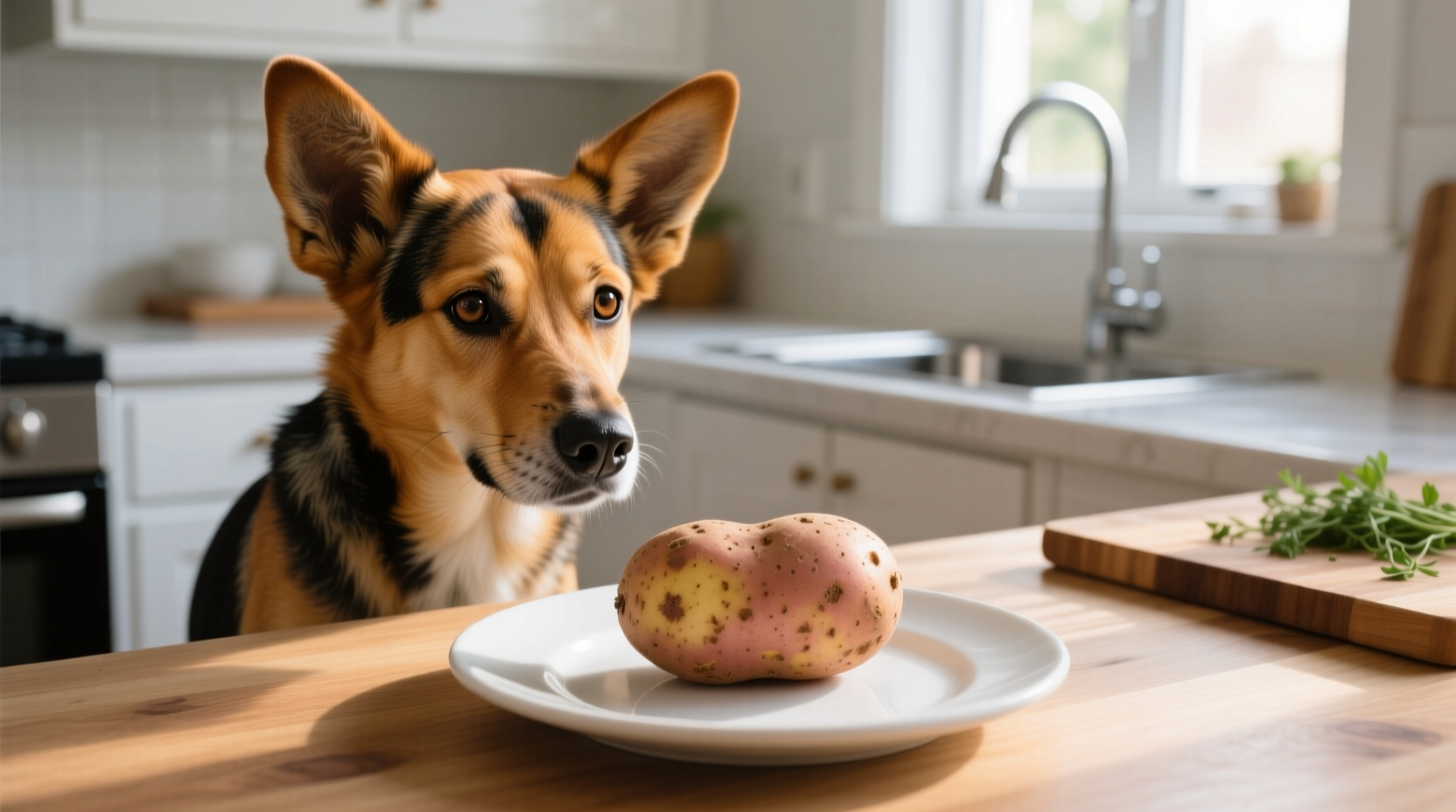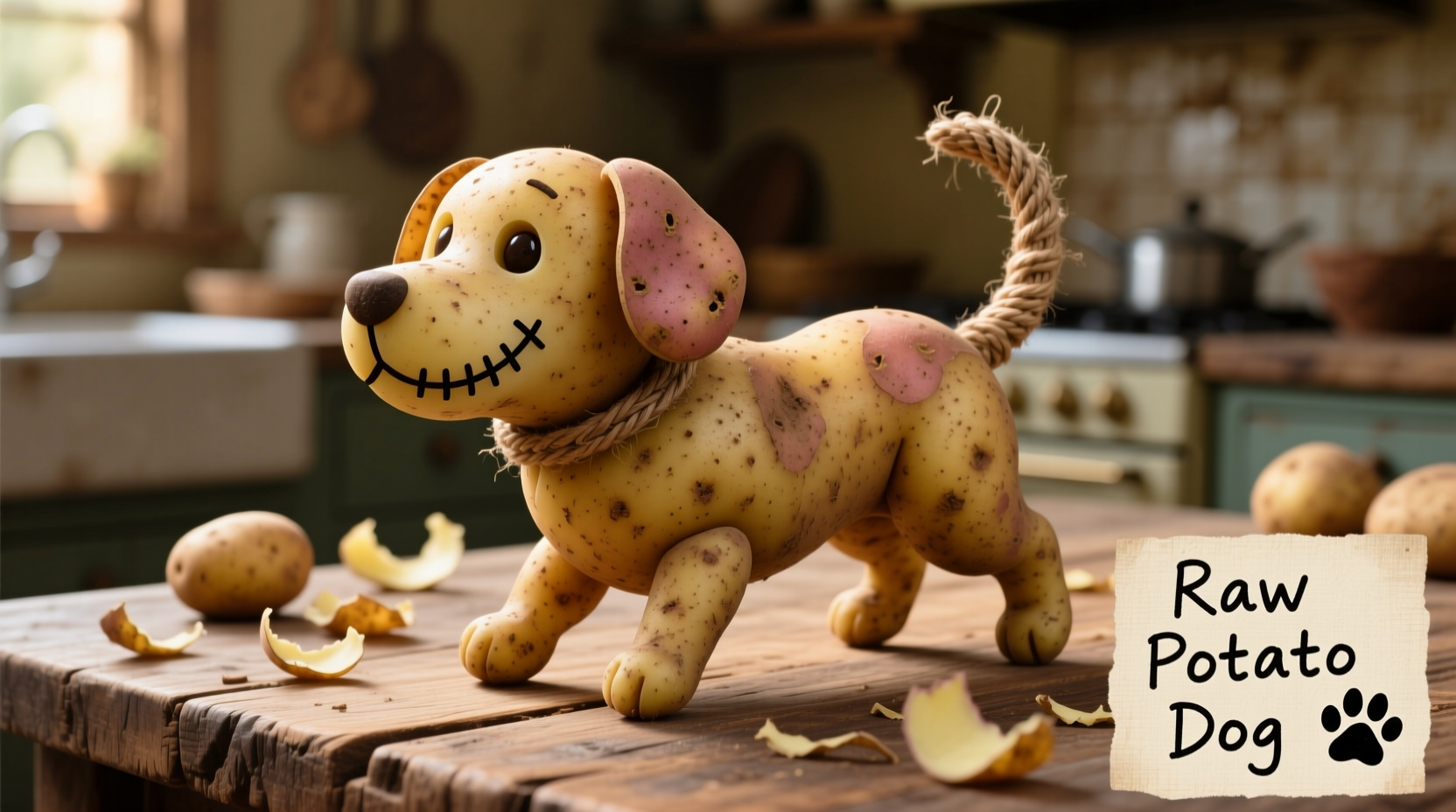Raw potatoes are not safe for dogs due to toxic compounds called solanine and chaconine. These naturally occurring glycoalkaloids can cause gastrointestinal distress, neurological issues, and in severe cases, be life-threatening to dogs. Cooked potatoes (without seasoning) are generally safe in moderation, but raw potatoes should be strictly avoided.
Why Raw Potatoes Pose a Serious Risk to Dogs
When your dog nibbles on a raw potato left on the counter, you might think it's harmless. But unlike humans, dogs lack the digestive enzymes to properly process certain compounds found in raw nightshade vegetables. The primary concern is solanine, a toxic substance concentrated in raw potatoes, especially in green-skinned areas and sprouts.
According to the ASPCA Animal Poison Control Center, solanine poisoning in dogs can occur after consuming as little as 0.1-0.2% of their body weight in raw potatoes. This means a 50-pound dog could experience symptoms after eating just 1-2 ounces of raw potato.

Recognizing Symptoms of Potato Toxicity in Dogs
Symptoms typically appear within 2-24 hours after ingestion and may include:
- Vomiting and diarrhea (sometimes bloody)
- Excessive drooling
- Weakness and lethargy
- Tremors or seizures
- Confusion or disorientation
- Difficulty breathing
| Symptom Severity | Timeframe After Ingestion | Recommended Action |
|---|---|---|
| Mild (vomiting, drooling) | 2-6 hours | Contact vet immediately; monitor closely |
| Moderate (diarrhea, weakness) | 6-12 hours | Vet visit required; possible induced vomiting |
| Severe (tremors, breathing issues) | 12-24 hours | Emergency vet visit; potential hospitalization |
Raw Potato vs. Cooked Potato: Understanding the Critical Difference
The cooking process significantly reduces solanine levels. Boiling or baking potatoes breaks down these toxic compounds, making them safer for occasional canine consumption. However, important distinctions exist:
- Raw potatoes: Contain high solanine levels (up to 90-100mg/100g in green areas)
- Cooked potatoes: Solanine reduced to 20-25mg/100g (generally safe in small portions)
- Fried potatoes: Unsafe due to fat content and potential seasonings
- Sweet potatoes: Safer alternative when cooked (no solanine)
Research published in the American Journal of Veterinary Research confirms that thermal processing reduces glycoalkaloid content by 30-40%, making cooked potatoes significantly less dangerous than their raw counterparts.
What to Do If Your Dog Eats Raw Potato
Immediate action can prevent serious complications:
- Remove remaining potato - Prevent further ingestion
- Note time and amount consumed - This helps veterinarians assess risk
- Contact your veterinarian or pet poison control - Don't wait for symptoms
- Do NOT induce vomiting without professional guidance
- Monitor closely for any symptoms while awaiting professional advice
The Cornell University College of Veterinary Medicine emphasizes that early intervention significantly improves outcomes in cases of solanine poisoning. Even if your dog seems fine initially, the delayed onset of symptoms means professional evaluation is crucial.
Safe Alternatives to Raw Potatoes for Dogs
If you're looking to incorporate vegetables into your dog's diet:
- Cooked sweet potatoes - Rich in fiber and vitamins (no solanine)
- Cooked carrots - Crunchy and good for dental health
- Cooked green beans - Low calorie, high fiber option
- Cucumber slices - Hydrating and refreshing treat
Always introduce new foods gradually and in moderation. The American College of Veterinary Nutrition recommends that treats and supplemental foods should not exceed 10% of your dog's daily caloric intake.
When to Seek Immediate Veterinary Care
While mild cases might resolve with monitoring, certain symptoms require urgent attention:
- Difficulty breathing or rapid breathing
- Severe or persistent vomiting (more than 2 episodes)
- Neurological symptoms (tremors, seizures, disorientation)
- Blood in vomit or stool
- Complete loss of appetite for more than 12 hours
According to veterinary emergency data collected by the Virginia-Maryland College of Veterinary Medicine, approximately 15% of dogs showing neurological symptoms after raw potato ingestion require hospitalization for supportive care including IV fluids and anti-seizure medications.
Preventing Accidental Raw Potato Ingestion
Proactive measures protect your pet:
- Store potatoes in closed cabinets away from curious noses
- Dispose of potato peels immediately in secured trash
- Supervise during meal preparation when potatoes are out
- Train your dog the "leave it" command for food safety
- Be extra cautious with garden potatoes if you have outdoor access
Remember that potato plants themselves (including leaves and vines) also contain solanine and pose risks to dogs. The Centers for Disease Control and Prevention notes that solanine acts as an anticholinergic agent, which explains why neurological symptoms occur in severe poisoning cases.











 浙公网安备
33010002000092号
浙公网安备
33010002000092号 浙B2-20120091-4
浙B2-20120091-4